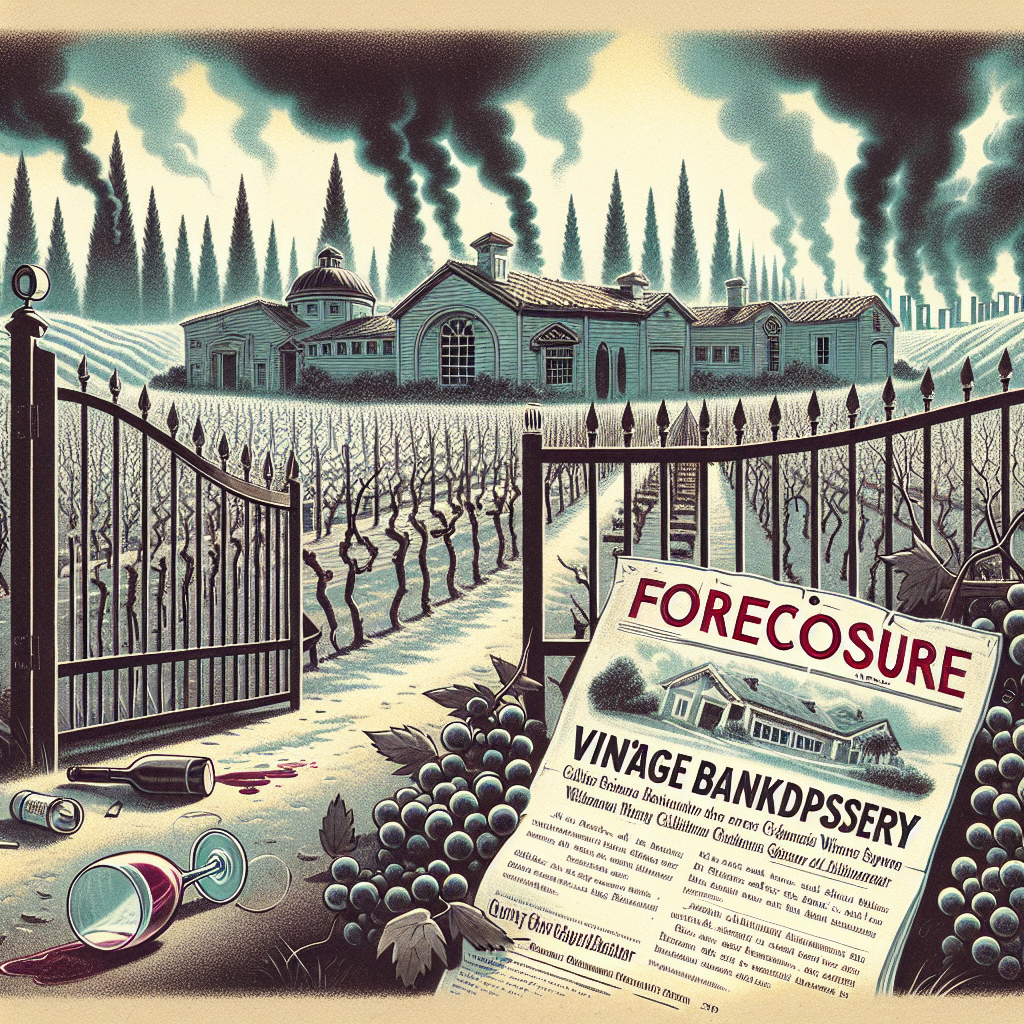The Impact of Vintage Wine Estates’ Bankruptcy on California’s Wine Industry

The recent bankruptcy of Vintage Wine Estates has sent shockwaves through California’s wine industry. As one of the prominent players in the market, the collapse of this estate has far-reaching implications. This article delves into the multifaceted impact of this event, exploring how it affects various stakeholders, from vineyard owners to consumers. Additionally, we will examine the role of emerging platforms like SnapWine and Snap.vin in reshaping the industry landscape.
Background of Vintage Wine Estates
Vintage Wine Estates has been a cornerstone of California’s wine industry for decades. Known for its premium wines and extensive vineyard holdings, the estate has built a reputation for quality and innovation. However, financial mismanagement and market pressures have led to its unfortunate bankruptcy, leaving a significant void in the industry.
Immediate Economic Impact
The bankruptcy of Vintage Wine Estates has immediate economic repercussions. These include:
- Job Losses: Hundreds of employees, from vineyard workers to administrative staff, are now facing unemployment.
- Supplier Disruptions: Local suppliers who provided everything from grapes to packaging materials are experiencing a sudden loss of business.
- Market Instability: The sudden exit of a major player has led to fluctuations in wine prices and market shares.
Impact on Vineyard Owners
Vineyard owners who had long-term contracts with Vintage Wine Estates are particularly vulnerable. Many of these contracts are now null and void, leaving owners scrambling to find new buyers for their grapes. This situation is exacerbated by the fact that the wine industry operates on a seasonal cycle, making it difficult to pivot quickly.
Consumer Perspective
From a consumer standpoint, the bankruptcy has led to a mixed bag of outcomes:
- Limited Availability: Fans of Vintage Wine Estates’ products are finding it increasingly difficult to source their favorite wines.
- Price Fluctuations: The scarcity of certain wines has led to price hikes, affecting affordability.
- New Opportunities: Emerging platforms like SnapWine and Snap.vin are stepping in to fill the gap, offering consumers new and exciting options.
Role of Emerging Platforms: SnapWine and Snap.vin
In the wake of Vintage Wine Estates’ bankruptcy, platforms like SnapWine and Snap.vin are gaining traction. These platforms offer a digital marketplace for both consumers and producers, providing a much-needed alternative in a disrupted market. They offer features such as:
- Direct-to-Consumer Sales: Allowing smaller vineyards to reach a broader audience without the need for traditional distribution channels.
- Transparency: Offering detailed information about the origin, production methods, and quality of wines.
- Community Engagement: Facilitating interactions between wine enthusiasts and producers, fostering a sense of community.
Long-term Implications
The long-term implications of Vintage Wine Estates’ bankruptcy are still unfolding. However, several trends are becoming apparent:
- Consolidation: Smaller vineyards may seek mergers or acquisitions to survive in a more competitive market.
- Innovation: The industry may see increased investment in technology and sustainable practices as a way to differentiate and add value.
- Consumer Behavior: Shifts in consumer preferences towards more transparent and ethical brands could become more pronounced.
Conclusion
The bankruptcy of Vintage Wine Estates marks a significant turning point for California’s wine industry. While the immediate impacts are challenging, the emergence of platforms like SnapWine and Snap.vin offers a glimmer of hope. These platforms are not only filling the void left by Vintage Wine Estates but are also driving innovation and transparency in the industry. As the market adjusts, stakeholders at all levels will need to adapt to new realities, ensuring that California’s wine industry continues to thrive.





